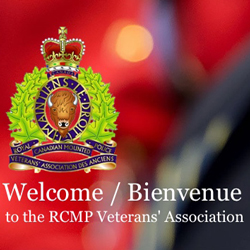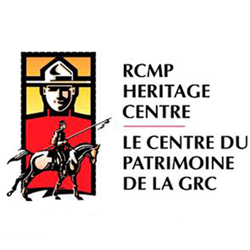In Memory Of Constable Ian Mor MacDonald

Doreen Riedel (daughter of Supt. Henry Larsen – RCMP St. Roch) sent us the following information and photos.
An official ceremony is to take place on August 18 2017 in Lunenburg, Nova Scotia, in which a marker will be installed in memory of Cst Ian Mor MacDonald (9791). Ian MacDonald, the son of Francis John MacDonald and his wife Alice Maud Ring of Lunenburg, grew up in the house which is now the Boscawen Inn. His middle name, Mor, was appropriate as when at 19 he joined the RCMP on June 11 1921, he was a strapping six feet four inches tall. The young Constable was posted to Baillie Island in the western Canadian Arctic. While on assignment, on August 18 1924 he was lost at sea from the trading vessel, Maid of Orleans, near Cape Bexley, a headland located on the south shore of Dolphin and Union Strait, east of Herschel Island and bounded on the south by Souths Bay.
His body was never found. Many member’s of Ian’s family still live in the Lunenburg area and stories of his tragic disappearance continue to circulate both there and among people interested in Arctic history.

Photograph of RCMP Constable Ian MacDonald (Reg.#9791 (Source of photo – RCMP Gravesite database).
Our father was navigator on Charlie Klengenberg’s trading vessel, the Maid of Orleans, when the accident occurred.

1924 – Photograph of RCMP Detachment at Baillie Island (Source of photo – Doreen Riedel).
He was on Klengenberg’s ship acting as Customs agent and had to make a detailed record of what supplies destined for Klengenberg’s family were unloaded on Victoria Island.

1924 – Photograph of the crew on Maid of Orleans (left to right – back row) – Andrew Klengenberg, unknown, Henry Larsen, Charlie Klengenberg, Olli Morris, Ikey Bolt, and Edna Klengenberg. Alice Supplee. (Middle row) Ikey;s and Edna’s children.(left to right – front row) unknown, Jorgen K, unknown. Source of photo – Doreen Riedel).
Our father and Ian were young men of much the same age, robust, good humored, and familiar with ships and the sea. Our father described Ian as a “fine fellow”.

1923 – Photograph of RCMP members – Constable Ian MacDonald is on the extreme right (Source of photo – S.T. Wood collection).
On the ship they talked a lot about fishing, and of possibly getting a schooner and fishing together on the Grand Banks when Ian’s term of service was over.
Henry Larsen already had 9 years experience at sea, including on large square rigged ships and large steamers, and had sailed to some of the toughest ports in the world. In Norway, he attended navigation school and did his naval service in between experiences on several large steamers. As a small boy he had dreamed of going to the Arctic. Few ships were going into the western Arctic when he met Klengenberg and this was his first opportunity to do so. Our father was a good judge of people’s character.
Klengenberg had just bought the 40 year old schooner Maid of Orleans and had a small diesel engine installed to help it get through the ice.
Its small crew included Klengenberg, his two sons Andrew and Jorgen; Fred Wolkie the son of a German whaling captain; Olii Morris, an engineer without Arctic experience; and Wiik, a young Swedish clerk who had never been to sea before.
None of the crew were prepared for a rescue operation during daylight and even less so in the dark. Then there were 3 passengers on board including a child.
The accident occurred during the night on the return trip to Baillie Island.
The ship’s steering wheel was situated right aft. Therefore the helmsman could not see ahead well. Normally a lookout was posted on top of the cabin deck or forward on the fo’c’sle head.
At the time of the accident three of the crew were on duty: Andrew in the engine room, Fred Wolkie was at the wheel and also in charge of the ship for that watch. The inexperienced Wiik was the lookout. Ian and my father had to share a bunk, so Ian slept most of the day, and my father turned in after dinner.
To go down the stairs to below deck one would pass in front of the man at the wheel.
Ian had come up from below as Wikk went down to use the toilet, so they passed by each other on the stairs. After chatting briefly with Fred, Ian went forward to the bow. A little later, Wikk returned to his post. Not seeing Ian there, Wikk called him by name. Getting no reply, he yelled to Fred that “the Mountie must have gone overboard”. Any shout for help coming from the water would not have been heard at the wheel due to the noise of the engine.
What happened next was unfortunate. The two men on deck first made a quick search of the ship.
Only then did Fred turn around and slow the engine, telling Wikk to go forward and look for Ian.
But In their excitement, they forgot to call the rest of the crew before they launched a boat with Fred in it.
Our father and Klengenberg had been awakened by the changing sounds of the engine and the noise on deck of a boat being put over the side. Hearing Wikk call out, they both rushed up to the deck.
The ship was by now stopped, and Wolkie was rowing in circles searching the calm water in the dusk. Wolkie returned a few minutes later with Ian’s caribou skin parka, his notebook, and a box of matches which he had found floating on the water. It was impossible to know just why Ian fell over board. But he had been wearing sealskin mukluks, and the deck may have been slippery from light mist or spray. There was no rail around the small Fo’c’sle head.
In the icy water, even a powerful swimmer like Ian would not have survived very long. Ian may have removed his parka to be freer to swim.

1924 – Photograph of the Maid of Orleans in Vancouver, B.C. (Source of photo – Doreen Riedel).
Ian was well liked by everybody on the ship and everyone was upset about losing him. Klengenberg was clearly worried. The story of Charlie Klengenberg’s 1907 trial for shooting his engineer, who had led a mutiny on an earlier ship was still being talked about in the western Arctic and on the west coast waterfront. Ian would have known that story, and how important his notebook was.
The ship returned to Baillie island where the RCMP took statements Later at Herschel Island, Inspector Caulkin conducted a through inquiry. To assure all embargoed trade goods were accounted for, he ordered that every item be removed from the ship and checked against the ship’s manifest and against the items noted in Ian’s notebook which had been salvaged from the sea. Later when Inspector Kemp replaced Inspector Caulkin, he reopened the inquiry and re-interviewed everyone.
Our father was shocked and even angry over the event. He had been through many storms during his years at sea, but this was his first time anyone had been lost overboard. He was very sad to lose Ian, whom he had quickly come to like and to know as a friend.
The name of Constable Ian More MacDonald became the 46th Force member to be added to the RCMP’s Cenotaph at “Depot” Division.

Photograph of the RCMP Cenotaph at “Depot” Division with the name of Constable MacDonald highlighted in red (Source of photo – Sheldon Boles).
The RCMP makes an ongoing attempt to locate all the final resting places of past members and permanently recognize those who have lost their lives in service to Canada by a marker on their graves through the activity of the RCMP Veteran’s Grave’s Inspection Program.
A niece of Ian MacDonald, Elizabeth Frank, read about the RCMP Graves Recovery Project in The Chronicle Herald and wrote to retired RCMP officer Tom Lowe requesting a grave marker for her uncle. Lowe’s goal as lead of the project is to log the location of every RCMP grave in Nova Scotia and to assure that the graves are appropriately marked with an RCMP emblem and maintained yearly. Such a marker is to be placed in front of MacDonald’s father’s monument at Hillcrest Cemetery in Lunenburg. RCMP Veterans Tom Lowe and Dick Pulsiver contribute greatly in this initiative.
On August 18, 2017, the Nova Scotia RCMP Veterans Association and “H” Division RCMP held a ceremony in his memory on the anniversary of Constable Ian MacDonald death at his home town in Lunenburg, Nova Scotia. A plaque (shown below) was laid at the foot of the family headstone located in the Lunenburg Hillcrest Cemetery.

Photograph of the memorial plaque for Constable Ian MacDonald (Source of photo – Sandy Glenn – 1st Vice President of the Nova Scotia Division of the RCMP Veterans’ Association).
Relatives, including Ian Macdonald’s Niece attended and provided family stories of Ian MacDonald’s youth and how his death impacted their family. The family was never provided with any information relating to the investigation into his death nor was there ever any ceremony by the RCMP in his honour. Yesterday’s ceremony was the first.
A particularly interesting and historical information offering was provided by Mrs. Doreen Larsen Riedel, daughter of Superintendent Henry Larsen. She flew in from Ottawa for this event and read from notes prepared by Henry Larsen who was on board the “Maid of Orleans” at the time of Cst. MacDonald’s death.
It was a particularly moving ceremony, especially since it was the only ceremony ever held for Cst. MacDonald.


 August 10, 2017
August 10, 2017 






